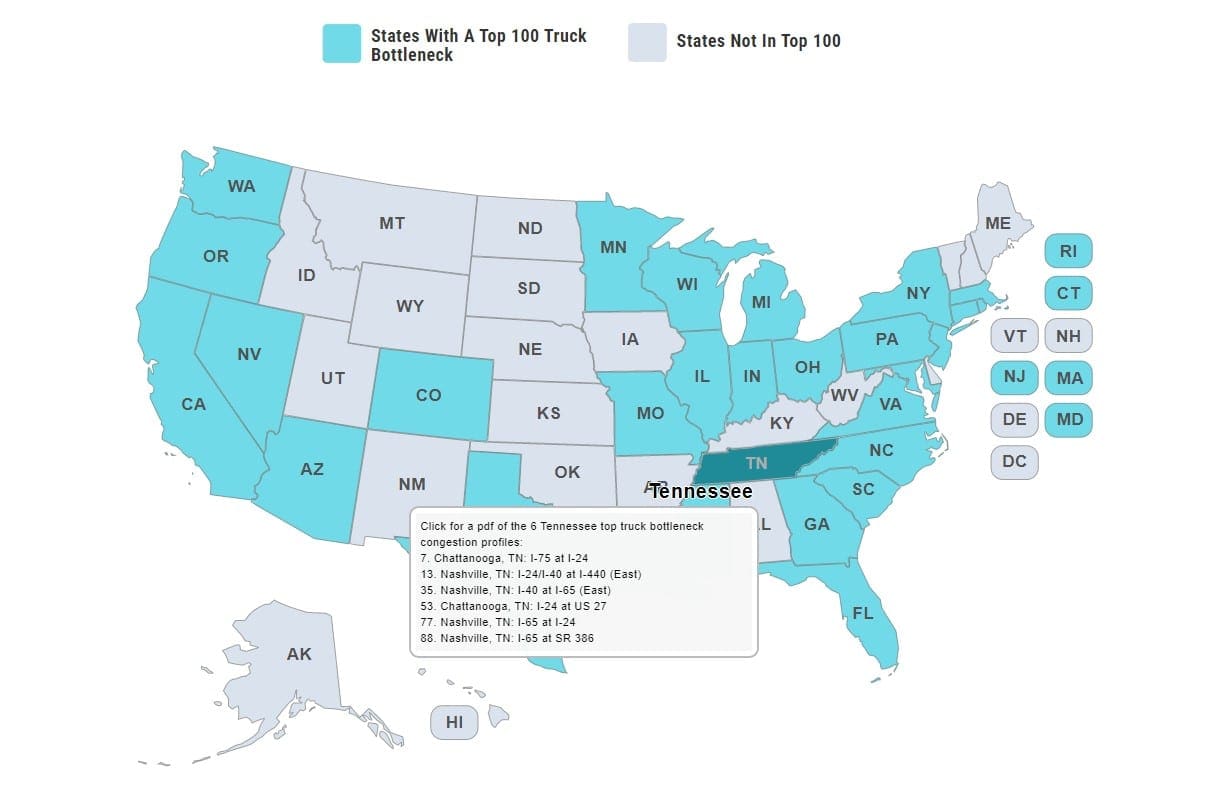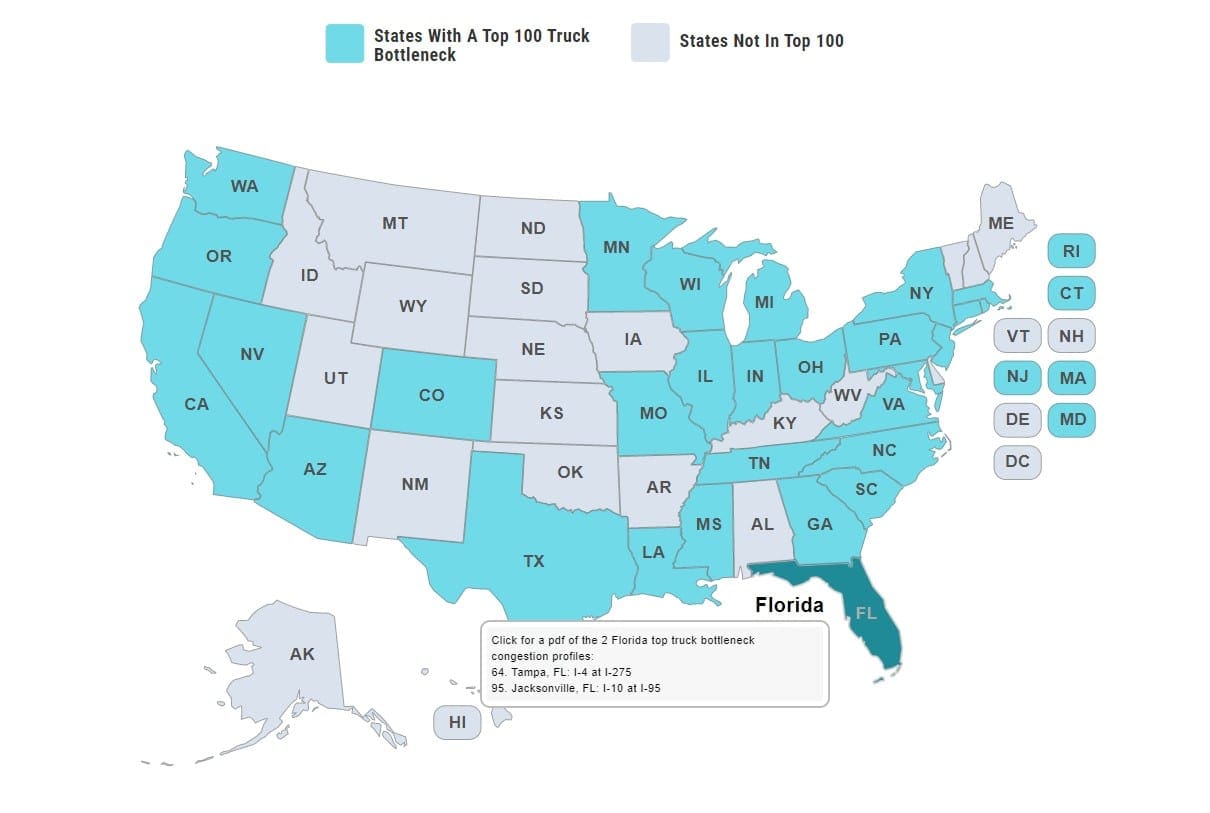Top 100 Truck Bottlenecks – 2021
100 Bottleneck Locations
Since 2002, the American Transportation Research Institute (ATRI) has collected and processed truck GPS data in support of numerous U.S. DOT freight mobility initiatives. Using truck GPS data from over 1 million freight trucks, ATRI develops and monitors a series of key performance measures on the nation’s freight transportation system. Among many GPS analyses, ATRI converts its truck GPS dataset into an ongoing truck bottleneck analysis that is used to quantify the impact of traffic congestion on truck-borne freight at over 300 specific locations. While other datasets may identify congested corridors, no dataset available today specifically identifies granular chokepoints in the nation’s truck freight transportation system.
Measuring the performance of freight movement across our nation’s highways is critical to understanding where and at what level investment should be made. The information provided through this effort empowers decision-making in both the private and public sectors by helping stakeholders better understand the severity of congestion and mobility constraints on the U.S. highway transportation system. This is of particular importance as the nation weighs the needs and resources available for transportation funding.
On a state and local level, this research can inform local investment decisions that can directly improve supply chain efficiency. ATRI’s bottleneck analysis incorporates and synthesizes several unique components, including a massive database of truck GPS data at freight-significant locations throughout the U.S., and an algorithm that quantifies the impact of congestion on truck-based freight. In addition, the annual reports provide a chronological repository of mobility profiles, allowing congestion changes to be assessed over time. This allows transportation analysts and planners to conduct performance benchmarking and identification of influential factors contributing to congestion and the requisite consequences on freight mobility.
Article originally appeared on American Transportation Research Institute


